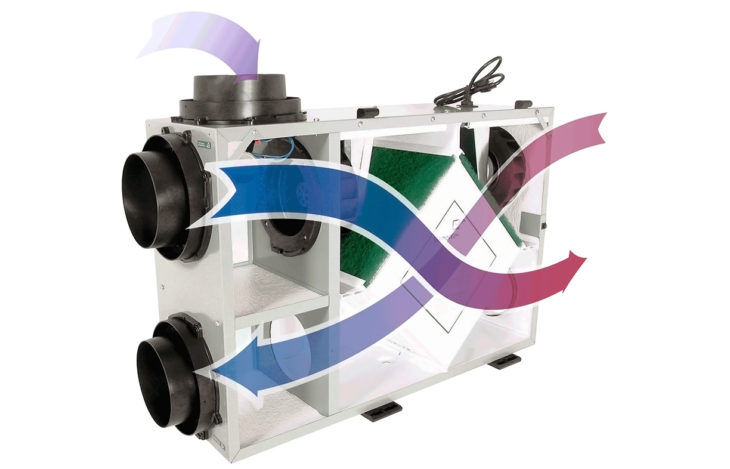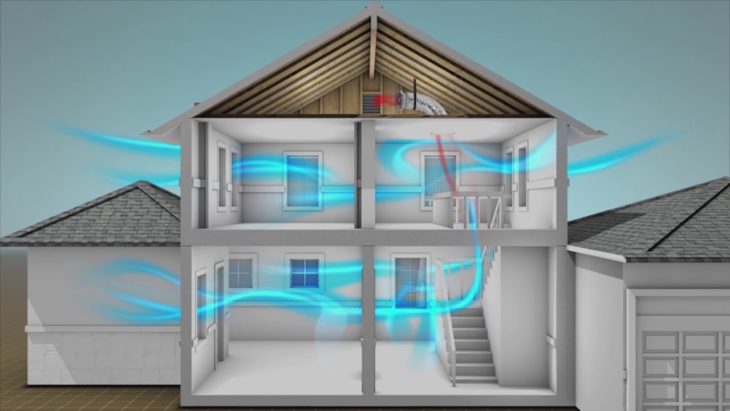In essence, a heat recovery ventilator is a way for you to exhaust stale air and bring fresh, oxygen-rich air into your home during the winter instead of closing all the vents and breathing the same air repeatedly. As the name implies, the old air is exhausted but the heat is recovered and then vented back into the home. Here’s a quick four-step guide that will provide a basic explanation of how heat recovery ventilators work:
Contents
1. Extracting Stale Air From the Home
The system begins its cycle with an exhaust fan that actively extracts stale air from home instead of letting it passively flow out. According to BPCVentilation – one of the UK’s leading providers and installers of heat recovery ventilators – the controllable extraction of air from the home allows for a level of airflow and airy comfort normally not experienced indoors during the winter because you can achieve optimal ventilation without any compromise in warmth.

Source: renew
2. Venting the Extracted Air to a Heat Recovery Unit
The air is extracted through a vent in the roof that contains an exhaust fan which pulls air out and upwards towards a heat recovery unit located in the attic. You can view this diagram to get a better idea of how the entire exhaust and intake system functions. The heat recovery unit, as its name implies, serves to capture the heat from the extracted air.
3. Pumping Captured Heat Back Into the Home Along with a Supply of Fresh Air
The heat recovery unit also contains a heat pump and several vents that lead back into the home. On the other end of the unit, there’s also an intake of fresh “supply air” which is pulled in from the home’s exterior. The captured heat is propelled back into the home along with the fresh air intake to supply fresh but warm air to the interior.

Source: youtube
4. Exhausting the Extracted Stale Air
At the same time, the fresh and warm air is being routed back into the home, the stale air is exiting the heat recovery unit and being expelled out of a vent in the roof. This component completes acts as a much-needed outlet for built-up CO2 and other indoor pollutants.
How Important is Fresh Air During the Winter?
Since many of us have been dealing with stale and stuffy air during the winter for our entire lives, you might be wondering why there’s such a fuss about fresh air recently. Well, “stale air” is simply a term used to describe air that has already been breathed in and exhaled, which means it contains more CO2 and other respiration by-products along with lower levels of oxygen. In fact, studies have shown that stale air can significantly hinder cognitive function and increase rates of depression. The term “stuffy” comes from the fact that the trapped air is often humid and dense with particles like dust, dander, debris, allergens, clothing fibres, and other indoor air pollutants, all of which can be filtered out by a heat recovery ventilator.
